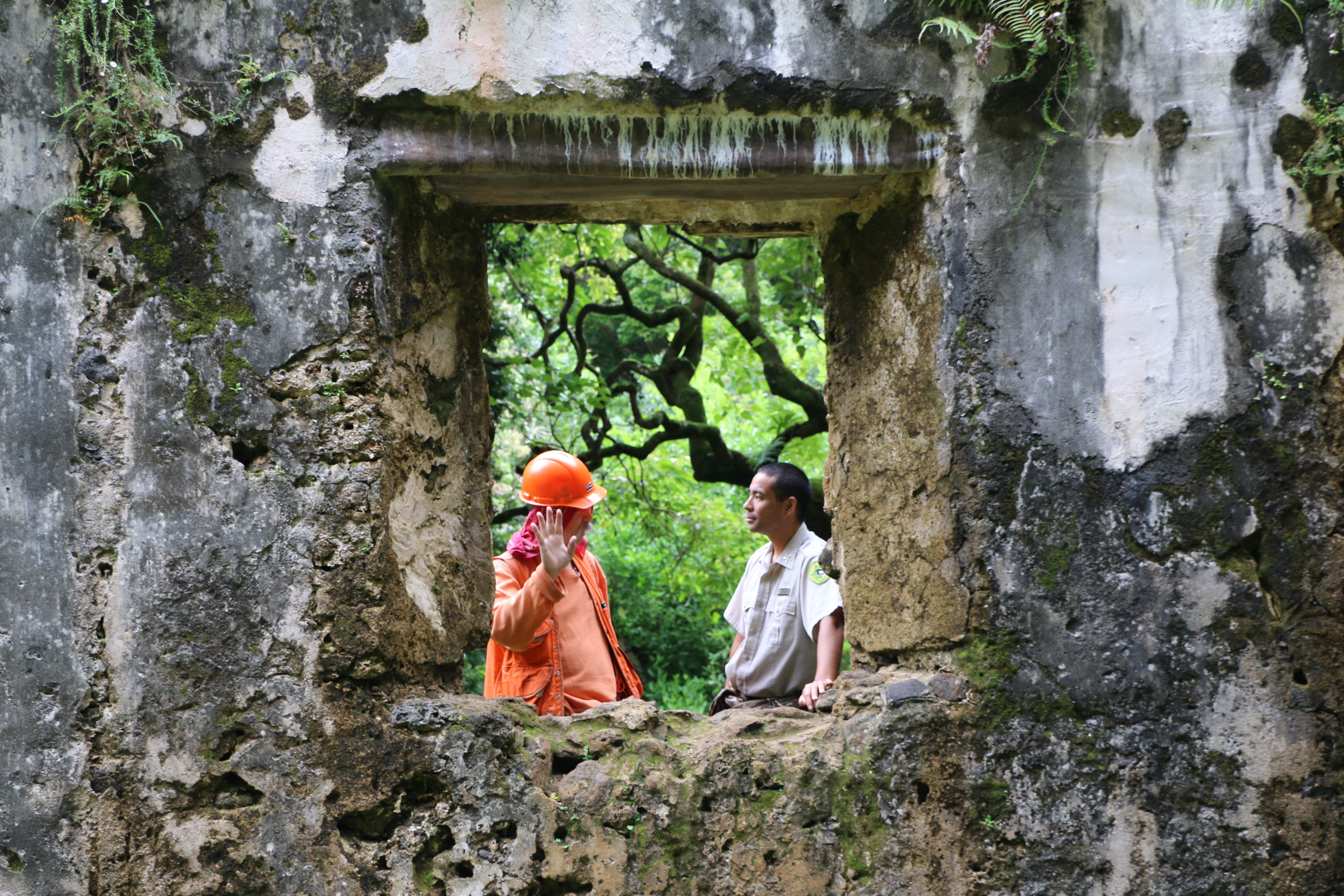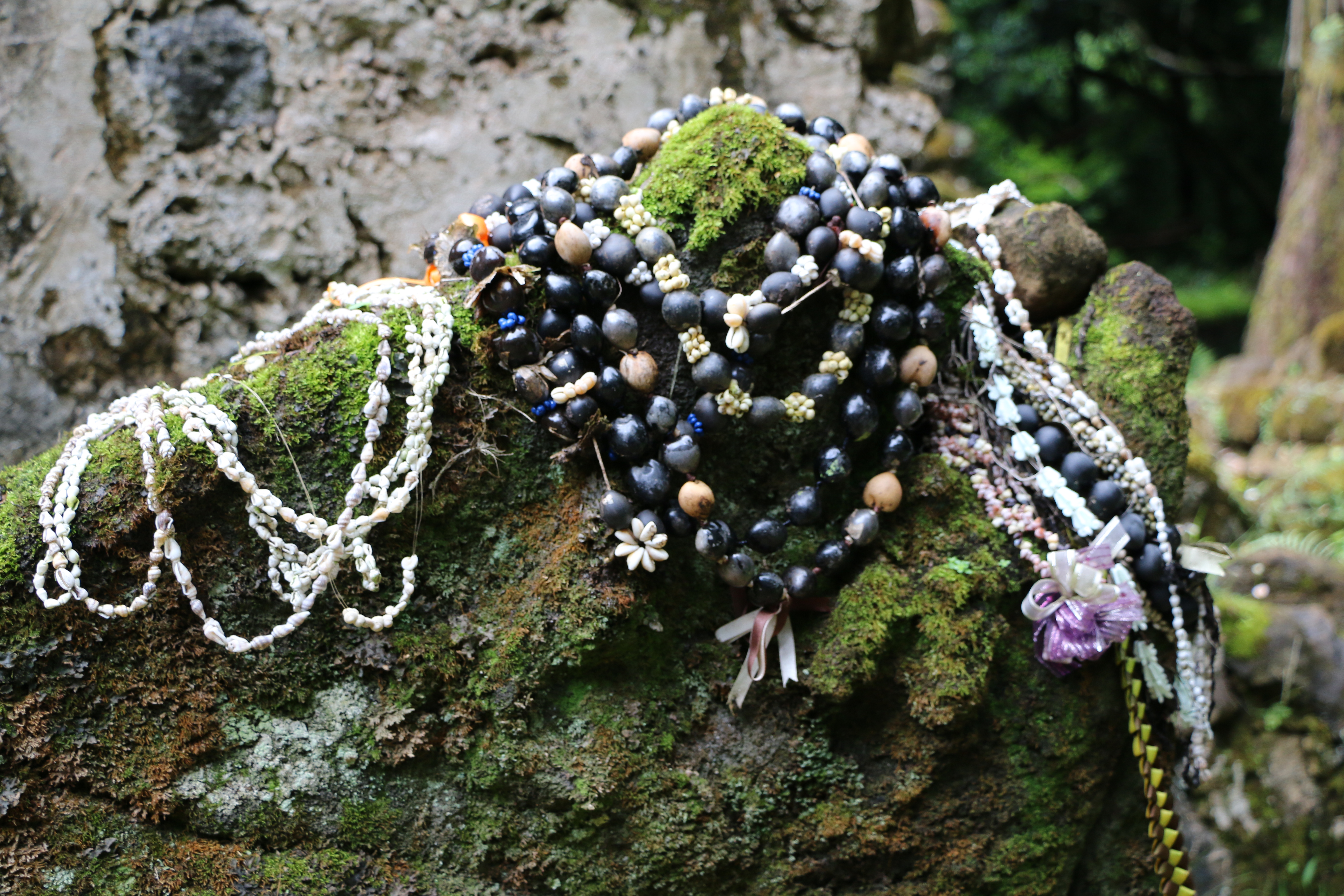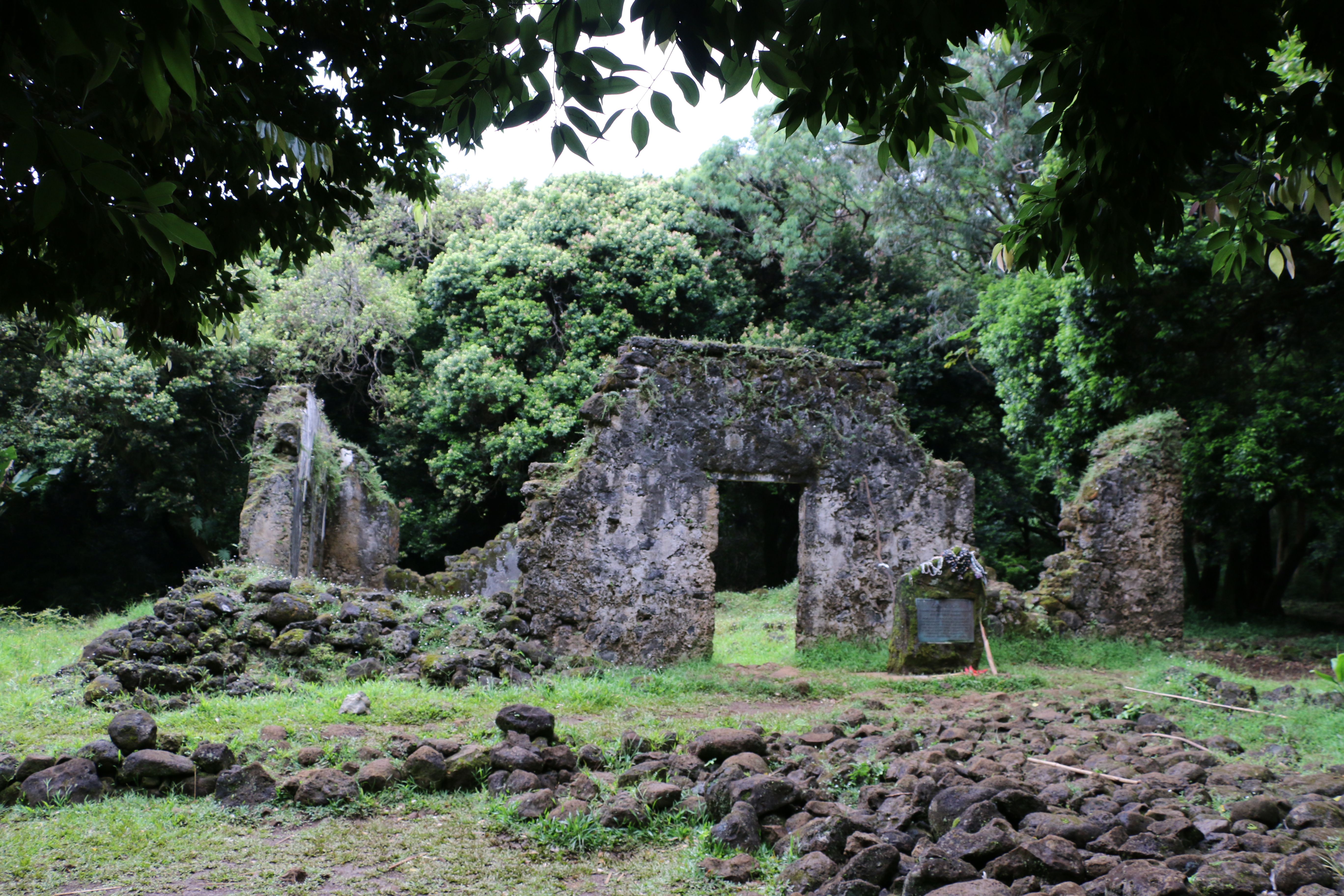Summer Home of Kamehameha III Defaced by Vandals

Kaniakapupu. Photo credit: Hawaiʻi DLNR.
Kaniakapupu, in the forest above Honolulu, in the Nuʻuanu district, is central to the story of modern Hawai‘i. Not only was it the summer palace of King Kamehameha III and Queen Kalama, it was the first government building built in western style with mortar and plaster.
Completed in 1845, Kaniakapupu was the “scene of entertainment of foreign celebrities and the feasting of chiefs and commoners. The greatest was a lūʻau attended by 10,000 celebrating Hawaiian Restoration Day in 1847,” (from a plaque erected on-site by the Commission on Historical Sites). Earlier it was the site of a notable heiau for Hawaiian royalty.

Vandalism at Kaniakapupu. Photo credit: Hawaiʻi DLNR.
Recently vandals etched a series of crosses on at least three of the inside walls of the crumbling structure.
For more than 15 years, volunteers from Aha Hui Malama O Kaniakapupu have worked tirelessly to protect and preserve this historically and culturally significant place.
During a recent trip to the site, the vice-chairman of the group, Baron Ching, pleaded, “Leave it alone. Don’t scratch it, don’t do anything to it, come with respect. Criminy sakes, I don’t know where you’re coming from, but this is not a graffiti palette to do your thing. This is important to a lot of people. This is important to the Hawaiian nation. It’s just utter disrespect, utter disrespect. How does it make me feel? It makes me feel awful.”

Kaniakapupu. Photo credit: Hawaiʻi DLNR.
On the day Ching visited the site with Ryan Peralta of the DLNR Division of Forestry and Wildlife, a family spread a blanket over the top of a stone structure just outside the walls of Kaniakapupu and prepared for a photo shoot. Even this seemingly innocuous activity is viewed as culturally disrespectful.
Ching added, “Come with respect. There is history going back to the beginning of time in this area. Modern Hawai‘i was forged in this place…inside these walls every single monarch, every single high chief or chiefess was inside these walls…and it’s entirely inappropriate to put graffiti on the walls, to move the stones around. It’s entirely inappropriate to be climbing around this place.”

Kaniakapupu. Photo credit: Hawaiʻi DLNR.
A DLNR Division of Conservation and Resources Enforcement officer also checked out the site and the vandalism. Unfortunately unless vandals are actually caught in the act of desecrating the sacred site, it’s difficult to identify them and subsequently cite them.
Within the past month, vandals also etched marks on the walls underneath the newly restored fence surrounding ʻIolani Palace in downtown Honolulu.
Reflecting on this kind of activity, DLNR Chair Suzanne Case commented, “It’s hard to understand how anyone thinks it is okay or pono to draw or etch graffiti on any of Hawai‘i’s historical or cultural treasures. They need to understand that their actions not only potentially destroy the cultural integrity of these sites and structures, but also show tremendous disrespect toward our host culture and to the countless volunteers and staff who work hard to preserve these places for future generations.”

Kaniakapupu. Photo credit: Hawaiʻi DLNR.
Ching concluded, “It’s not the first time they’ve carved all kinds of stuff in there. They’re carving happy faces, all kinds of stupid stuff. This plaster is 180 years old; (it) was put here by the hands of the kapuna. It was the first government building built by the government of Hawai‘i. When you vandalize it or damage it in anyway, there’s no way we can repair that.”
DLNR representatives say social media sites have potentially exacerbated vandalism by failing to point out that Kaniakapupu is closed to visitation and no one should be in the area.
Anyone who witnesses or has knowledge of vandalism to any historical or cultural site in Hawai‘i is encouraged to call the statewide DOCARE Hotline at 643-DLNR.










